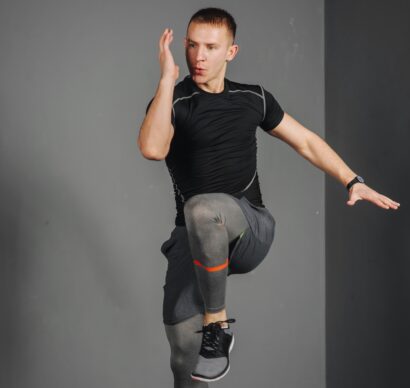by Devin Blessing, DPT, OCS
Whether you’re an experienced runner or a beginner just getting started, it’s important to have certain baseline performance standards to reduce likelihood of injury. Research on injuries in runners suggests about 50-65% of runners deal with an injury every year. This article presents 3 quick tests any runner can implement to make sure baseline levels of strength and stability in key areas for a runner are present.
Lateral Step Down
The Lateral Step Down Test is a good screen of ankle mobility, hip stability and ability to load your knee and patellafemoral joint. It’s important to pay attention to technique here. Try to keep your hips level and your knee in line with your second toe. Lower down and gently tap your heel to the ground before returning to the start position. Make sure your trunk stays vertical and you are dropping the pelvis straight down. Tendency to shift the hips backwards is a strategy to avoid loading the knee. You should be able to perform 10 repetitions with following the above criteria and without pain.
Bridge w/ Straight Leg Raise
The Bridge with Straight Leg Raise is a good test of glute strength and stability. The goal is to keep a level pelvis without any dipping of your hips. You should be able to hold this for 30 seconds on each leg while maintaining a level pelvis and without any cramping of your hamstrings or pain in your lower back.
Single Leg Heel Raise
The highest forces in your body occur below the knee when running with 6.5-8x body weight forces at the soleus and 2.5-3x body weight forces at the gastroc, which makes the Single Leg Heel Raise Test extremely important for both performance and injury considerations. To perform this test properly, you should maintain a slow, steady motion of your heel raise without any bouncing. You should be able to perform the number of repetitions based on your age and sex in the chart below.

If you have pain or are unable to pass any of these tests, schedule a session with a physical therapist to help you improve performance and reduce your likelihood of injury while running.




